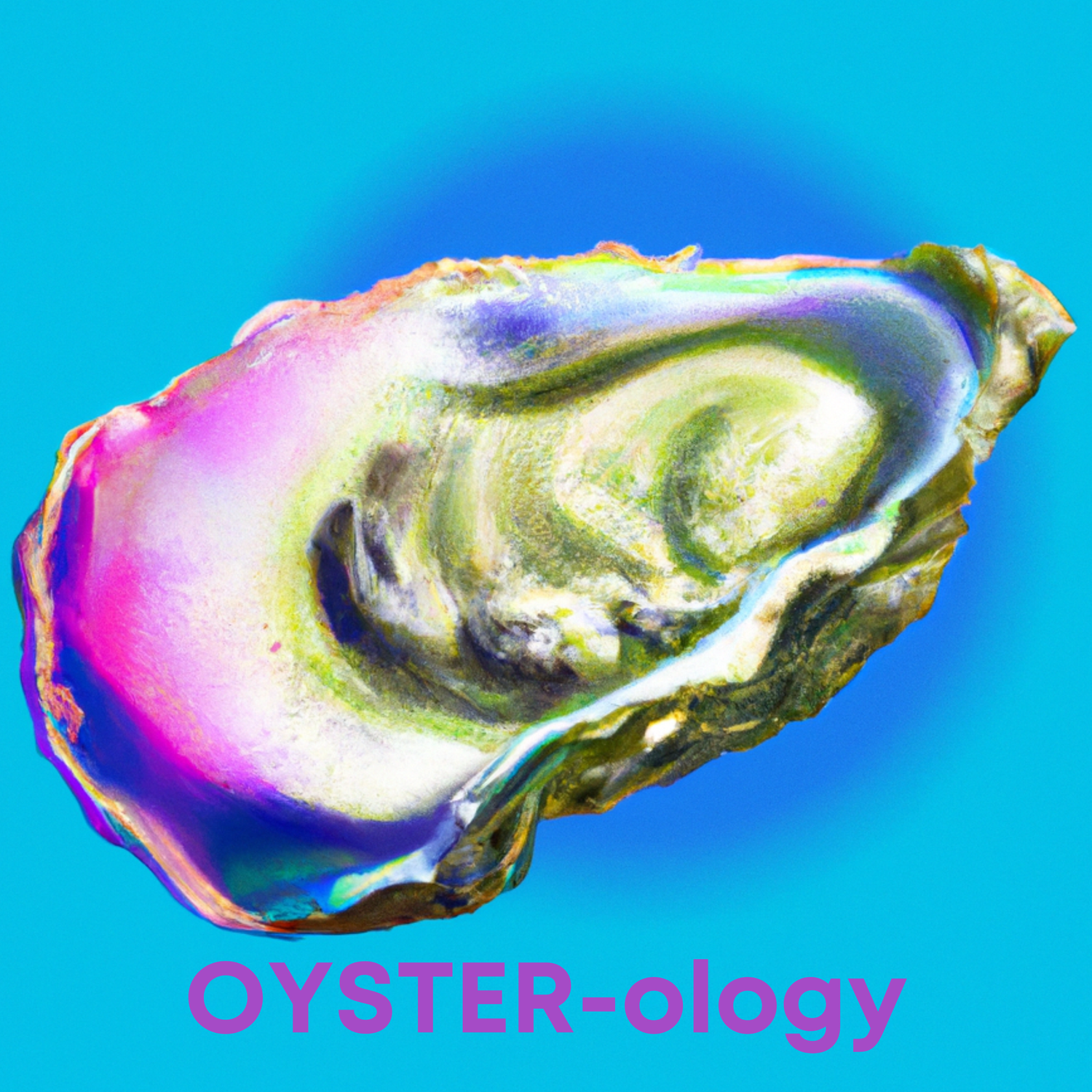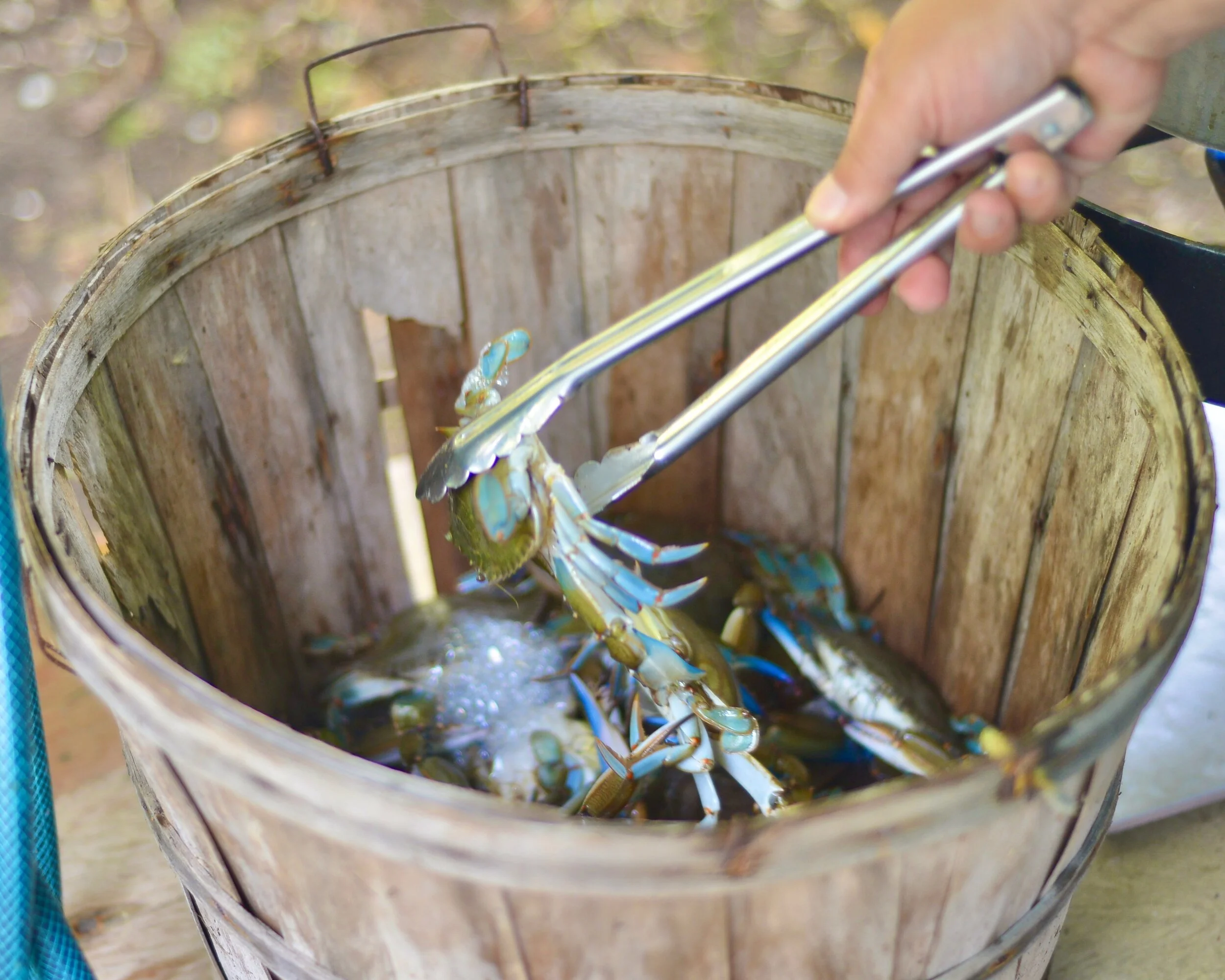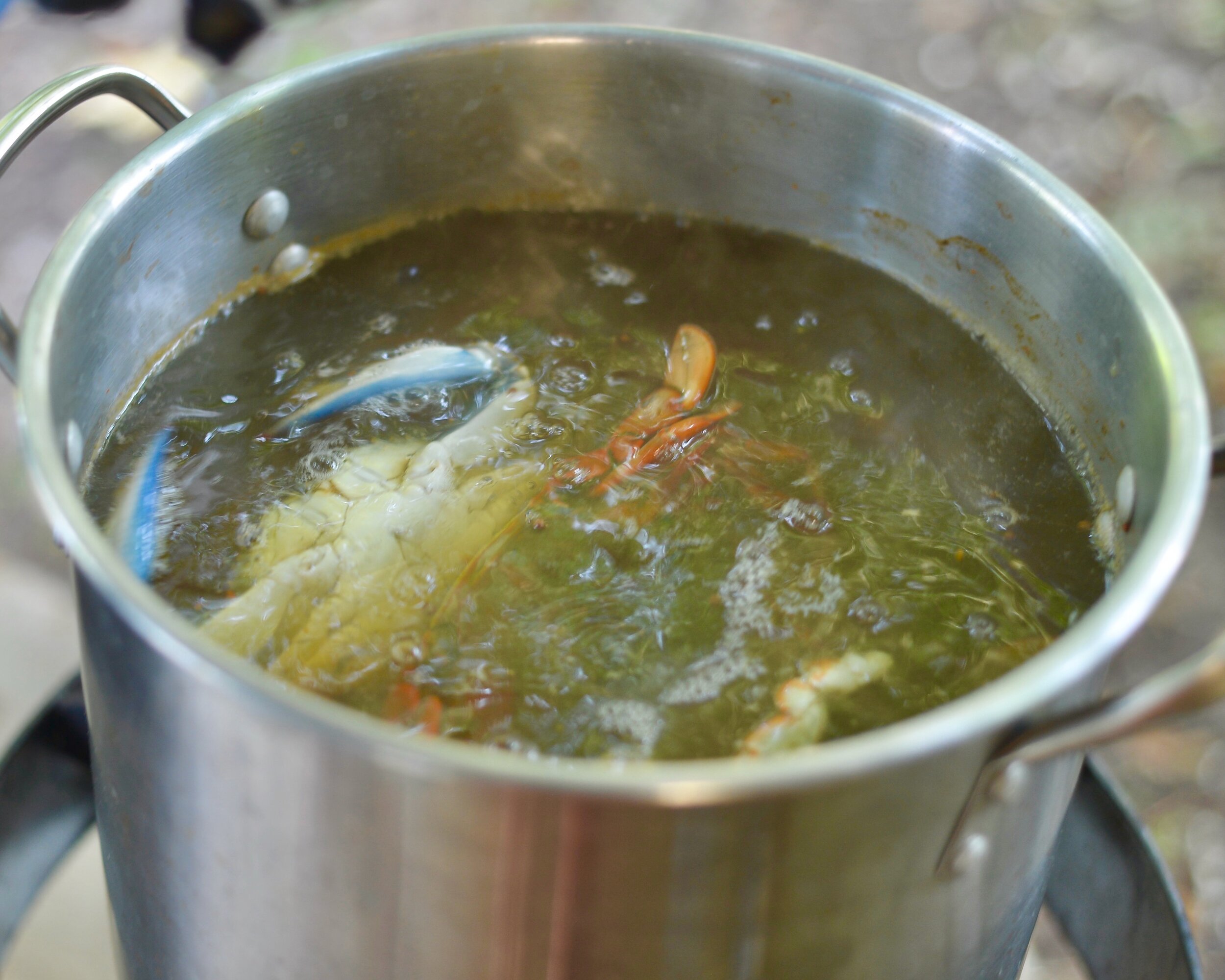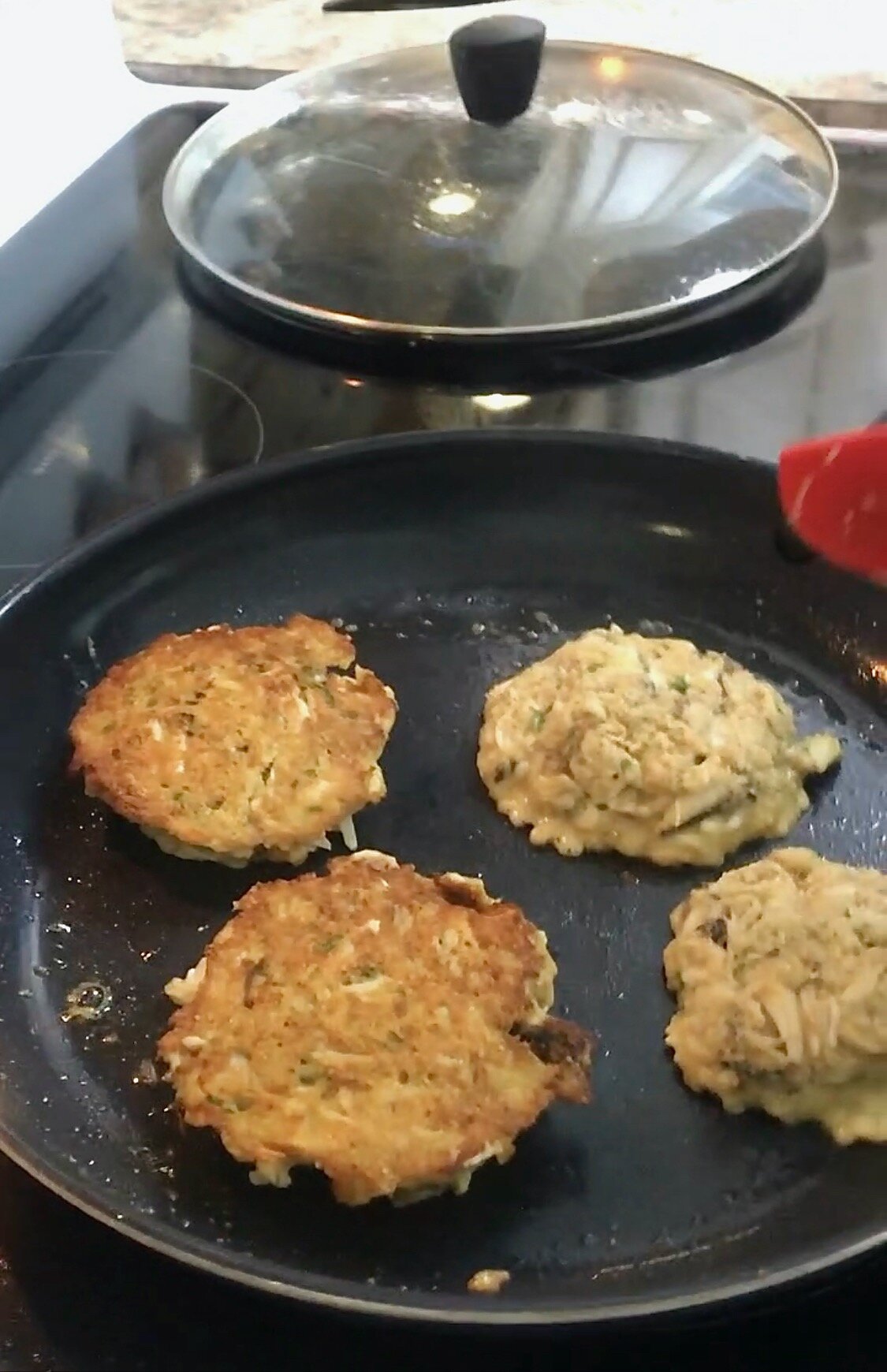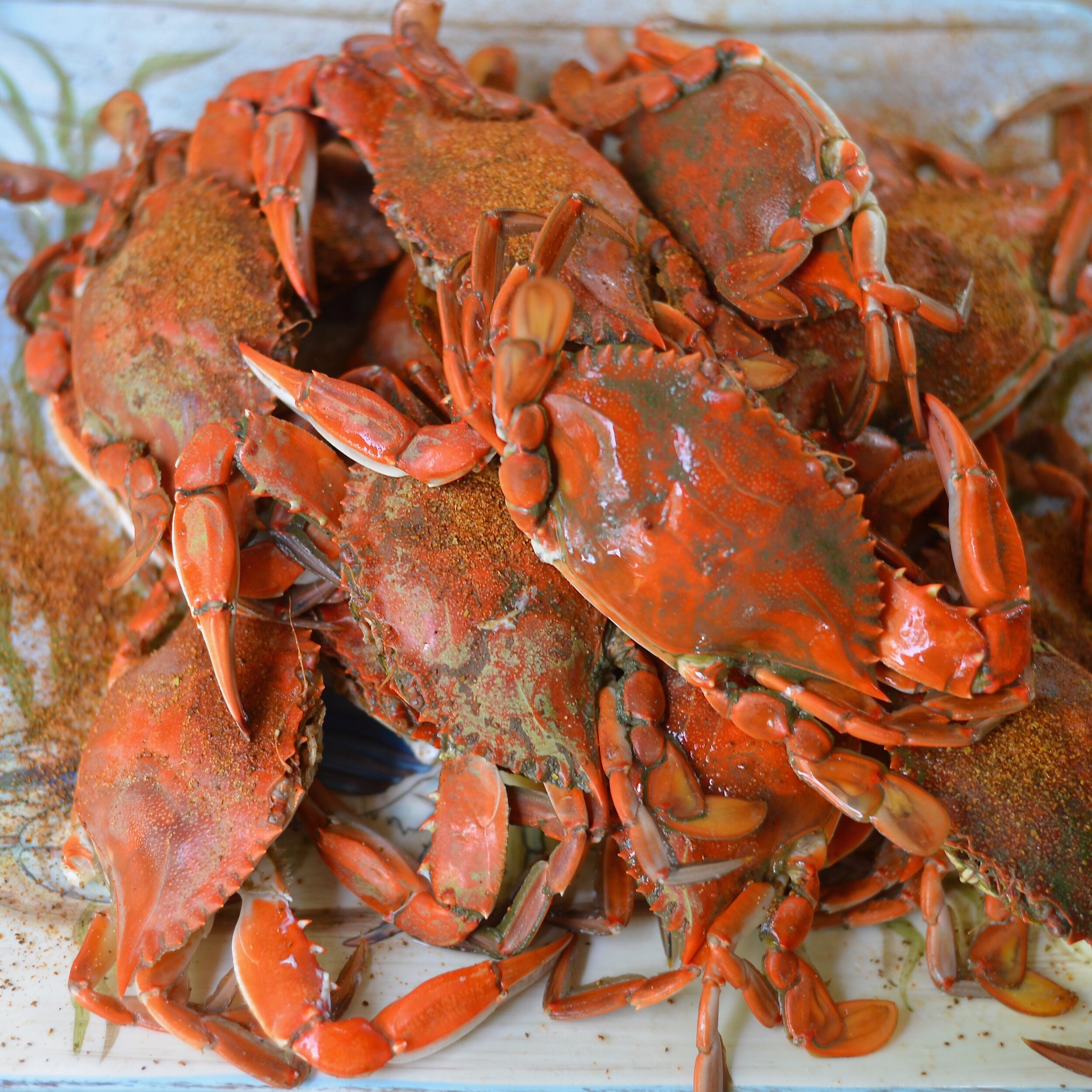Of Crabs, Kids and Never Growing Too Old.
/Crabs. Seems like they’re found on just about every coast in all sizes, shapes and colors. And I have had the pleasure to enjoy them in many parts of the world. From the lankey Opilios and Kings from the cold waters of Alaska, to the fat dungeness and Red Rocks in the Pacific Northwest, Stone Crabs in Florida and Peekytoes in New England. Hard shell and soft, I’ve eaten Sri Lankan Mud Crabs, Hairy Crabs, Red Crabs, tree-climbing Coconut Crabs and prehistoric-looking Slippers in the tropics. I’ve even dined on the diminutive Sand Crab just to see what it was like.
But when I think of crabs my mind races back to my childhood, when my father exposed my brother, sister and me to the wonders of that scrappy, fearless Eastern US crustacean that will eat anything and pinch everything: the Chesapeake Blue Crab. It was that small colorful creature that helped me discover not just the sweet and savory joy of crab dipped in butter and eaten with your hands, but also the work that goes into sourcing such delicacy and painstakingly picking apart shell and pincers to scrape out mere morsels of heavenly meat. It was through the blue crab that I first learned the beauty of eating animals in their whole, natural state, and first felt the emotional sting when killing a living creature in order to do so. Eating blue crabs as a boy taught me about life and death, the origins of food and the importance of respecting the noble creature you are about to consume. Each blue crab experience delivered truths in life that subtly helped shape me into who I am today; essential lessons like patience, attention to detail, the complexities of nature and the beauty of simplicity.
I revert back to those innocent days whenever I pull out a crab pot to toss in the waters of the Delmarva Peninsula off Chincoteague Island, Virgina. It starts with loading scrap chicken necks or the smelliest bait fish you can find into the trap. Toss it in the water and disappear for a few hours so it can soak. The moment of pulling the pot up from the murky bottom to see what — if anything — is in the trap still stirs a quickening of my heartbeat to this day. Visions of crabs piled on each other, snapping and clicking their claws, swirl in my mind as I pull the rope, drawing the trap ever closer to the briny surface. These days, the take is fewer than yesteryear, with a good haul being maybe five keepers. Just dump them in your bucket, reload your trap and toss it back in. Repeated effort and childish optimism eventually pays off.
Flipping over the irascible little fighters to check if they are Jimmies or Sallies, I still revere the olive shade of their shells and the pearlescent white of their undersides. I marvel at their pointy legs like fine brushes dipped in azure paint and their rear little swimmer fins. But most beautiful are those jagged claws like porcelain streaked with cerulean blue and which — I’m frequently reminded of the hard way — can reach surprisingly far behind to unsuspecting human fingers. When a she-crab shows her velvety sponge bulging with eggs she goes back in the water because, as Dad used to say, there’s no sense in killing a million to eat just one. The others go into the big steel pot, pungent with crab boil spiciness. I try to slide them smoothly beneath the surface head first, but often they cling haphazardly to each other like a Barrel Of Monkeys game. Either way, the water is so hot that the end comes quickly. It’s a miraculous transformation of color between live and cooked crab, with its grayish-green shell turning orangish-red. But as beautiful as it is is when you first pull it from the boil — that splendid sheen dappled with muddy Old Bay spices glistening through the steam — a hint of sadness and regret at the faded blue always accompanies the excitement.
Just as my father did to me, I have schooled my boys in the art and joy of picking crab. Every summer at the shore we did it at least once. And we steadfastly followed the 4 rules which Dad said must always be followed: (1) Always pick crab outdoors, preferably on an old picnic table covered with newspaper spread out; maybe a couple of rocks on the corners to hold the paper down in the wind. (2) The crabs have to be piled high in the middle of the table right on the paper so it soaks through to the wood, and must still be hot enough to burn your fingers without causing permanent harm. (3) No special tools are allowed aside from a few small wooden mallets, nut crackers and those skinny metal pickers that every self-respecting east-coaster has shoved somewhere deep in the back of a kitchen drawer. If those aren't enough to get all the meat out then you’re just doing it wrong. And lastly, (4) No music — just calm chatter and laughter with few outbursts except when someone pulls out of the shell a perfect, whole claw without breaking it. That’s always cause for celebration. Off-key singing is always welcomed, but no crying when that crab get’s its final vengeance by cutting your fingertips with a shard of shell and a little dose of burning spice. That’s all part of the experience.
What you do beyond those rules falls into two categories: Eating from the shell or picking the crab for meat. Eating right at the table with a blizzard of Old Bay sprinkled on is great with kids. It’s messy and noisy with the cracking of shells and pounding of mallets. It takes a while to complete a meal since the goal is more fun than productivity. You can toss some corn-on-the-cob to sustain them as they pick, but that’s optional, as the crab is always the main event. Stock up on the paper towels and have a garden hose nearby to rinse everything down.
I still eat Blues each August when the mood to sit at the table and pick meat from the shell strikes, which is admittedly not as often as it used to be. Sadly, the growing up of my kids, their cousins and friends has simply resulted in less crab consumption in my home. It’s a labor of love which seems harder when done alone. And after just a couple of crabs I remember why pre-picked crab meat is so expensive. Don’t get me wrong, crab picking in solitude still results in great flavor, a wonderful meal and a sense of neanderthal accomplishment. But it also ushers in a wistful nostalgia of a summer yard beside the water, filled with kids and chaos and the promise of good food shared with those most loved. Absent is the din of childrens’ chatter and the sopping piles of newspaper crammed with shells and guts. It’s quieter now; cleaner and more organized. But it tends to create that tortured desire to — just briefly — turn back the clock and do it all over again.
So my advice is to pick your crab with a friend rather than alone, as I recently did with a fellow empty-nester. Yes, rules were broken; mistakes were made. The meat was mostly picked for crab cakes and omelettes rather than eating like a caveman. It was even performed indoors, accompanied by several glasses of wine and, dare I say it, a cutting board instead of newspaper. But the mildly-competitive picking of the crab, the furtive comparison of each other’s growing mound of meat and pile of detritus shell and entrails, replaces sentimentality with a new, grown-up pleasure. And it reveals the child who still lives inside you, hiding under the weight of years and stress and responsibilities but still yearning to occasionally come out and play. And for that inner child, crabbing and picking is one of the best ways to do it.
And the glorious white meat tastes (almost) as sweet….
